Trade schools present a compelling alternative to traditional colleges, offering targeted training for in-demand careers. With programs for electricians, plumbers, HVAC technicians, and more, these institutions emphasize hands-on experience, enabling students to enter the workforce quickly and affordably. As you consider your career path, it’s essential to explore the top trade school options and understand their unique benefits and limitations.
1. Understanding Trade Schools Overview
Trade schools, also known as vocational or technical schools, provide targeted training for specific careers, such as electricians, plumbers, and HVAC technicians. These programs are designed for quick completion, often ranging from a few months to two years, allowing students to enter the workforce sooner than traditional college paths. Enrollment is open to high school graduates and those with work experience.
Unlike conventional colleges, trade schools prioritize practical skills and hands-on training over theoretical education. They are generally more affordable and focus on specialized training that prepares students for skilled trades and allied health professions. Many institutions offer a variety of programs on a single campus, while others may concentrate on a specific field, ensuring students gain the technical abilities needed for their chosen careers.
2. Benefits of Attending Trade School
Attending trade school offers a swift pathway into the workforce, with programs designed to be completed in a fraction of the time it takes to earn a traditional degree. This allows graduates to start earning a steady income much sooner, making it an attractive option for many.
The financial benefits of trade school are significant, as tuition costs are generally lower than those of four-year colleges. Additionally, the shorter duration of these programs helps minimize overall expenses, including living costs, making it a more economical choice for students seeking a quick return on investment.
Trade schools focus on high-demand careers, equipping students with the skills needed in industries that are actively seeking workers. This targeted approach not only enhances job security for graduates but also opens doors to long-term career growth in fields that are essential to the economy.
Moreover, trade schools prioritize hands-on experience, allowing students to engage in practical training that mirrors real-world scenarios. This emphasis on skill development ensures that graduates are well-prepared to tackle challenges in their chosen professions, making them valuable assets to employers.
3. Popular Trade School Programs
Carpentry programs are popular among trade school students, offering a blend of theoretical knowledge and practical skills in woodworking. Typically completed in 9 to 24 months, these programs include hands-on training in construction techniques, blueprint reading, and essential safety principles. Graduates are well-prepared for various roles in the construction industry, making carpentry a valuable trade.
Another sought-after program is the Commercial Driver’s License (CDL) training, which equips students with the skills needed to operate commercial trucks. These programs can be completed in as little as 6 to 24 weeks, focusing on safety protocols and practical driving skills. With the growing demand for truck drivers, obtaining a CDL opens up numerous job opportunities in logistics and transportation.
In the realm of technology, Computer Information Systems and IT programs are increasingly popular. These courses cover essential topics such as cybersecurity, networking, and game design, preparing students for a variety of careers in the tech industry. With the rapid advancement of technology, skilled IT professionals are in high demand, making this an attractive option for aspiring students.
4. Evaluating Your Career Goals
Evaluating your career goals is essential for making informed decisions about your future. Start by determining if you have a clear vision of the specific career path you wish to pursue. If your desired profession requires practical, hands-on training, trade school may be the ideal choice, providing targeted education that aligns with your aspirations.
Financial considerations also play a crucial role in this evaluation. Trade schools typically offer more affordable tuition and shorter programs, enabling quicker entry into the workforce. This can lead to reduced student loan debt, making it a practical option for those eager to start their careers without the lengthy commitment of traditional college programs.
5. Cost Comparison: Trade School vs. College
Trade schools typically offer a more affordable alternative to four-year colleges, with average student loan debt significantly lower than that of university graduates. Programs are shorter, enabling quicker entry into the workforce and reduced living expenses. Additionally, financial aid options can further alleviate training costs, making trade schools an attractive choice for many.
6. Hands-On Learning Experience Explained
Hands-on learning experiences are central to trade schools, which emphasize practical training tailored to specific industries. These institutions provide specialized programs that equip students with the skills necessary for immediate employment. By focusing on real-world applications, students gain valuable experience that enhances their employability and prepares them for the workforce.
The curriculum in trade schools is designed to be both practical and relevant, allowing students to work directly with tools and equipment. This immersive approach fosters the development of technical skills and problem-solving abilities. Additionally, trade programs are typically shorter than traditional college degrees, enabling students to transition into their careers more quickly and efficiently.
- Trade schools emphasize hands-on training in specific trades.
- Programs are designed to be practical and industry-relevant.
- Students gain real-world experience with tools and equipment.
- The duration of programs is shorter than traditional college degrees.
- Admissions focus on practical skills rather than academic performance.
7. Job Market Demand for Skilled Trades
The job market for skilled trades is thriving, with trade schools offering targeted, hands-on training for professions like electricians, plumbers, and HVAC technicians. These programs are designed for quick completion, often within a few months to two years, allowing graduates to enter the workforce rapidly. This practical approach equips students with the specific skills needed in high-demand industries, enhancing their job security.
Moreover, trade schools are typically more affordable than traditional four-year colleges, enabling students to graduate with less debt. Many institutions also provide financial aid, scholarships, and career placement assistance, further supporting graduates in securing employment. As industries continue to seek skilled workers, trade school graduates find themselves well-positioned in a competitive job market.
8. Tips for Choosing the Right School
When choosing the right school, it’s essential to evaluate your career goals and ensure the program aligns with your aspirations. Consider your financial situation, as trade schools often provide more affordable and shorter programs, minimizing student debt. Additionally, reflect on the time commitment required and your preferred learning style, as hands-on environments may suit you better than traditional academic settings.
In conclusion, trade schools present a practical and efficient educational option, providing targeted training for in-demand careers. They enable students to enter the workforce more quickly and affordably than traditional colleges. However, it’s crucial to evaluate personal interests, financial circumstances, and career aspirations to determine if this path aligns with your goals. Trade schools can be a valuable choice for aspiring professionals.



